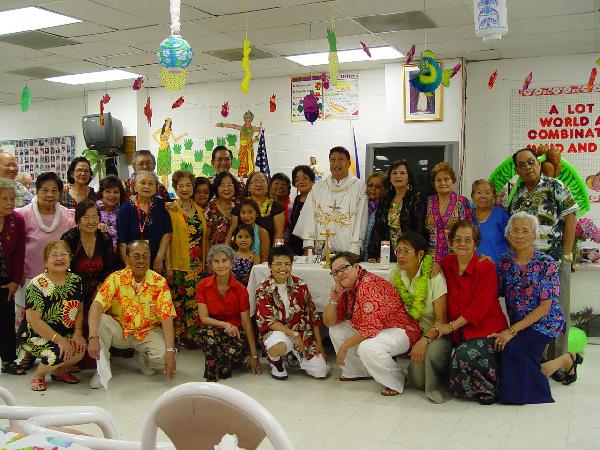by Echo Park Community Coalition (EPCC)
Wednesday, Jul. 14, 2010 at 6:45 AM
epccla2002@yahoo.com 818-749-0272 337 Glendale Blvd. Los Angeles, CA 90026
For Filipino-Americans who are not religious and those who want to know about the “ La Naval De Manila”, we refer to when Spain dueled the Netherlands in the World Cup last July 10, 2010 in South Africa,we have to tell the story of the Battle in Manila Bay in 1646.
This is not to glorify our colonial legacy as some Filipino Americans do in their PCN Nights, but this is also to honor the prowess of Filipino seamen who manned the Spanish ships. Until today, the Philippines is the country in the world that sends a lot of seamen into the different oceans.
This is also to add to the much glorified pirates story about the Carribean. Shame of Johnny Depp for not including the Filipino pirates and their battles in his films!.

dsc07412.jpg, image/jpeg, 1280x960
EPCC NEWS
July 12, 2010
The La Naval De Manila, 1646
Los Angeles—For Filipino-Americans who are not religious and those who want to know about the “ La Naval De Manila”, we refer to when Spain dueled the Netherlands in the World Cup last July 10, 2010 in South Africa,we have to tell the story of the Battle in Manila Bay in 1646.
This is not to glorify our colonial legacy as some Filipino Americans do in their PCN Nights, but this is also to honor the prowess of Filipino seamen who manned the Spanish ships. Until today, the Philippines is the country in the world that sends a lot of seamen into the different oceans.
This is also to add to the much glorified pirates story about the Carribean. Shame of Johnny Depp for not including the Filipino pirates and their battles in his films!
The Battle of Manila Bay (La Naval De Manila)
The Battle of Manila Bay called by the Spanish histrorians as the “La Naval De Manila” was a series of five naval actions that were fought in the waters of the islands in Manila Bay, Mindoro and Marinduque in 1646, between the forces of Spain and the Dutch Republic, during the Eighty Years War.
The Spanish forces consisted of between two and three Manila galleons and a galley (all had large contingents of Filipino volunteers), against three separate Dutch squadrons, totalling eighteen ships.
Heavy damage was inflicted upon the Dutch squadrons by the Spanish-Filipino forces, forcing the Dutch to abandon their invasion of the Philippines.
As usual. the unexpected series of successes against superior numbers was attributed by the Spanish and Filipino participants to the intercession of Virgin Mary.
The Dutch attacks Manila, 1646
In 1646 the Dutch were believed to have sent 18 warships in three squadrons under Maarten Gerritsz Vries to converge on Manila. News of the first of these squadrons was received on February 1, 1646.
The only ships available for defense were the galleons Encarnación and Rosario, recently arrived at Cavite from New Spain. These were well-armed, carrying 34 and 30 pieces of artillery, respectively, but they were only two ships against many. Nevertheless, it was determined to man and equip them for war. Fajardo named General Lorenzo de Orella y Ugalde commander-in-chief. Fajardo spoke to the men of the fleet on March 3, 1646, just before they weighed anchor.
The First battle
The first battle occurred on March 15, 1646, off Mariveles Island, near Corregidor. The two Spanish ships defeated four Dutch ships, which, however, were able to escape in the night. None of the Spanish-Filippino crews were killed, but the Spanish claimed to have learned later that many Dutch were killed, and two of the ships were rendered useless.
The Spanish galleons were then dispatched to await a relief ship from New Spain, the galleon San Luis, in the Embocadero, principle target of the Dutch. On the 24th, a squadron of seven Dutch warships blockaded the two Spanish galleons in a harbor on the island of Ticao. The blockade lasted more than a month, but was then lifted when the Dutch sailed for Manila. General Lorenzo followed them with his two ships.
The Second Battle
The second battle occurred on the night of the 29th-30th of July, between Banton and Marinduque. The battle lasted from 7 in the evening to daybreak. The Spanish lost six men killed and destroyed one of the Dutch ships (a fireship that was unsuccessful in its attack).
The Spanish vessels pursued the Dutch, catching up with them on July 31, 1646 off the coast of Mindoro.
Another terrific battle ensued, with the Dutch losing another fireship and having their flagship badly damaged. At dusk the Dutch fled towards land.
On the governor's orders, the Spanish galleons returned to Cavite in August, after a six months' voyage, where needed repairs were made. Fajardo rewarded General Lorenzo with one of the best encomiendas in the islands.
There still remained one Dutch squadron, waiting near Manila. The Encarnación and Rosario were now reinforced by the newly constructed San Diego, a galleon intended for New Spain, but now prepared for war. The three galleons sailed from Cavite on September 15, 1646, accompanied by a galley and four brigantines.
Another battle ensued shortly thereafter, with the Dutch again retreating. A further battle occurred on October 4, with the same result. Because of favourable winds the Dutch escaped, but 600 sick people and two captured Dominicans on board and De Vries died.
And that was the La Naval de Manila in 1646 and in the World Cup last July 10 , Spain won over the Netherlands, 1-0!
******

